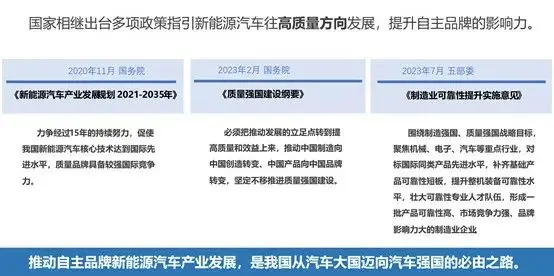(注:本文是译文,original author: Youseok Kou)
The ESC system controls the braking forces of the four tires to stabilize the vehicle motions based on its working principle shown in
ESC系统根据其工作原理控制四个轮胎的制动力以稳定车辆运动。
Figure 2.6. The functionalities of the ESC system are based on the follow objectives: i) following of the desired yaw rate, ii) regulation of the vehicle sideslip, iii) rollover prevention and iv) the slip control of the wheels. The controller uses sensor information for the four wheel speeds, lateral acceleration, steering input, roll angle and yaw-rate to detect the vehicle motions and to judge the driver’s intention. based on the above information, the controller derives the optimal braking force of four wheels and generates them independently.
ESC系统的功能是基于以下目标:I)跟随期望的偏航率,II)车辆侧滑的调节,III)防侧翻和IV)车轮的滑移控制。控制器使用的传感器信息为四轮速度、横向加速度、转向输入、侧倾角和横摆率来检测车辆运动并判断驾驶员意图。基于上述信息,控制器分别得到四个车轮的最优制动力。
The switching rule will be derived to activate corresponding ESC control modules defined as i) wheel slip control, ii) yaw moment control, iii) side slip control, and iv) rollover prevention control. The control modules are active when control values crossed predefined thresholds as explained below.
切换规则基于相应激活的ESC控制模块,定义为I)车轮滑移控制,II)横摆力矩控制,III)侧滑控制,和IV)防侧翻控制。当控制值达到预定义阈值时,控制模块激活如下所述。
The ESC controller needs servo-control algorithm to overcome the parametric uncertainties and un-modeled dynamics. This sub-section will present a sliding mode control algorithm, which calculates the braking torque necessary to achieve other desired vehicle states and the desired longitudinal slip ratios.
ESC控制器需要伺服控制算法来克服参数不确定性和未建模动态。本文提出一种滑动模型控制算法,该算法计算达到车辆状态和纵向滑移率所需的制动力矩。
The SMC is applied as the robust servo-control. Before implementation of the controller, the control vehicle model is recomposed. The braking force is defined as the control input as shown in Eq. (2.21). The model is derived from the linear form using Eq.(2.17), which represents the linear vehicle body model with respect to the steering input.
将SMC应用于鲁棒伺服控制。在控制器的实现之前,重构控制车辆模型。制动力Fx被定义为控制输入。该模型是从线性形式导出的,它表示相对于转向输入的线性车身模型。
A nonlinear 3-DOF vehicle model is developed, and the verification procedure shows it to be a good approximation of a sport utility vehicle. This nonlinear model captures the lateral-yaw-roll motions of the vehicle with difference less than 10 [%] from the CarSim model. Its simplicity and accuracy make it suitable for application to the sliding mode control design of the ESC.
开发了一个非线性的三维车辆模型,验证程序表明它是一个很好的近似运动型多用途车。该非线性模型从CARSIM模型捕获差分小于10 [%]的车辆横向偏航横摇运动。它的简单性和准确性使其适用于ESC的滑动模型控制设计。
The ICC system developed and studied in this research includes an electronic stability control (ESC) system, a rear wheel steer (RWS) system and a continuous damping control (CDC) system. The RWS and the CDC in this study serve as “place holder” algorithms. In other words, they were developed to approximate mature systems for intended production. The ESC algorithm, designed via the SMC scheme, includes a rollover prevention strategy as well as lateral/yaw motion control.
本研究开发的ICC系统包括电子稳定控制(ESC)系统、后轮转向(RWS)系统和连续阻尼控制(CDC)系统。在这项研究中的RWS和CDC作为“位置持有者”算法。换言之,它们被开发成近似于预期生产的成熟系统。ESC算法,通过SMC方案设计,包括防侧翻策略以及横向/偏航运动控制。
The ESC and the RWS systems demonstrate their effectiveness in achieving enhanced vehicle stability by their performance in the NHTSA sine-with-dwell tests.
ESC和RWS系统证明了它们在NHTSA正弦和驻留测试中的性能在增强车辆稳定性方面的有效性。
One significant finding derived from the simulation results is that while two independently designed chassis control systems improve vehicle performance when they work alone, the combined system does not consistently produce satisfactory results when the systems are not coordinated. This simple example shows the importance of the coordination in the development of ICC.
从仿真结果得出的一个重要发现是,当两个独立设计的底盘控制系统在单独工作提高车辆性能时,组合系统在系统不协调一致时不能产生令人满意的结果。这个简单的例子说明了协调在开发中的重要性。





 广告
广告





























































